“Segregation becomes a problem when housing market mechanisms and discrimination in housing allocation contribute to the dominance of poverty and lack of perspective in certain neighbourhoods.”
Segregation comes in many forms , yet it can be defined as a physical separation between people in a region on the basis of their identities. Most common types of segregation are due to socio-economic, cultural, racial, religious or legal divisions. There are two types of socio-economic segregation, poverty and affluence. When there is poverty segregation, there is a division between people with areas where people live only in or close to poverty lives. Affluence is the contrary, meaning the existence of areas where only wealthy people live. Legal segregation refers means segregation of people forced by legal frameworks.The apartheid system in South Africa that was in place until the 1990s is one example of such - this form is luckily very uncommon today. Nevertheless, segregation is far from overcome and particularly urban areas are hotspots for segregated communities. In this article, we will be taking a closer look at four of Europe’s capitals, namely Stockholm, Berlin, Paris and Madrid, and see what segregation looks like within these cities. Since we want to give a broader picture of the issue of segregation we based our research on both academic studies of the cities and combined them with interviews of young adults who live or grew up in these cities. We hope that by shining a light on the issue of segregation we can start more public debate and hopefully incentive change where change is needed.
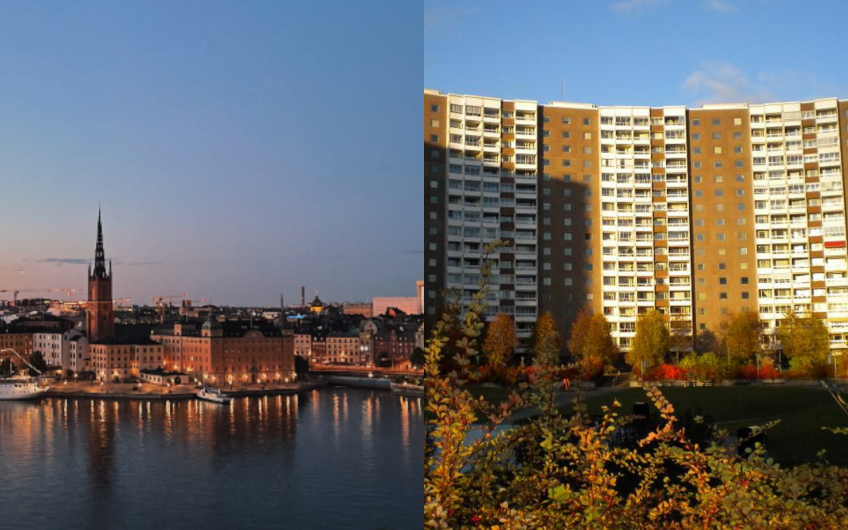
READ MORE: Segregation in Stockholm
Sweden is often thought of as the country of equality but Stockholm might well be the city with the most similarities to Panem, having both affluence and poverty segregation on both a micro and macro scale. This means that there are certain areas within Stockholm where only the rich can afford to live and certain areas where almost exclusively people with more marginalised resources or even poverty live. Recent academic research found that Stockholm was at the top in both affluence and poverty segregation in Europe due to a low level of social housing and a very hard housing market to access.
The inaccessible housing market also came up during our interviews with young adults who grew up in Stockholm. Affordability is on top of the agenda of Stockholm residents and many wanted to discuss the prices of their houses or apartments. In general, there is a felt pressure that one should move away from home quite early in adulthood which is hard when you can’t get a loan for an apartment at the level of salaries given to young adults. Instead, there is a sentiment that many who can live in an apartment in Stockholm are those who have parents who can buy one for them or at least help with the loan application. Yet,many families do not have these resources.
The alternative to buying a house would be the Bostadskö, a queue system for apartments run by the municipality. The queue time can however be extremely long. According to Bostadsförmedlingen, the responsible public authority, the queue time for getting an apartment in central Stockholm is approximately 18 years. This means that someone joining the queue at the age of 18, will only be eligible for an apartment at the age of 36.
Due in large part to the housing situation in Stockholm, there is a large problem of socio-economic homophily. Homophily means that people mostly interact with members of their own socio-economic group. This creates disadvantages and less opportunities for people growing up in poorer areas. Growing up in poorer areas is also a key factor that leads people to criminal activities. Committing a crime seems to be the only way to achieve the status they see in others’ lifestyles. Homophily also fosters a mentality of “we” against “them”, reinforcing distrust between people from different suburbs and increasing distrust in the legal or political institutions. There is an ongoing debate about incorporating more camera surveillance and visitationszoner in areas where criminal networks are thought to operate. Visitationszoner is similar to the American stop-and-frisk for specific areas. Since the areas discussed are mostly in low-income areas there is a sentiment that these actions would be seen as non-acceptable if they were placed in high-income areas instead.
In the past, the municipality of Stockholm and the national government have tried to deal with the situation but have mostly focused on education and immigration. One regulation stopt immigrants from living in or moving to certain areas, areas that already had a high percentage of immigrants living there. Otherwise, they would lose their economic support, a solution created by the government to stop the creation of parallel societies in areas with a lot of migrants. However, even if this policy would mitigate the creation of a parallel society or an increase of segregation within society it does nothing to decrease the existing problem.
READ MORE: Segregation in Berlin
“Berlin’s history of division and reunification affected suburbanization patterns and the unequal economic restructuring of the city over time.”
Both in East and West Berlin, industries received financial support from both the governments on both sides of the wall. When the wall and the GDR fell in 1989, such politically motivated state-support disappeared and a process of deindustrialisation followed, especially but not exclusively in the East. This caused high unemployment rates and the lowest GDP among all European metropoles compared to their nationwide averages.
Nevertheless, Berlin today is a well-connected city; public transport is affordable and even free for school children. However, segregated poverty now goes hand in hand with poorer infrastructure. Access to resources is central to the question of how segregation plays out: Poor children and the recipients of state support have become more segregated over time.
In Berlin, social and cultural segregation is a persistent problem that affects various aspects of urban life. The situation is particularly evident in neighbourhoods like Neukölln, Kreuzberg, Prenzlauer Berg and Weißensee. Segregation in Neukölln has led to the formation of social and cultural “parallel societies” in which certain groups tend to keep to themselves.This leads to a lack of integration and limited exchange between different social and cultural backgrounds.
Marlene P. grew up in Berlin Kreuzberg. She says that in Berlin the differences can be seen in the districts. The spatial demarcation there is strong, especially through zones that were gentrified throughout the past 20 years. “For example, in the past there were almost only Turkish stores on my street, now there is only one late-night store because the area has simply been gentrified and now there are wealthy families, mainly native Germans”, Marlene says. Until now, there is a difference between gentrified Kreuzberg with its hip cafés and bars and its neighbouring district Neukölln. But Neukölln is also being gentrified now. Students who cannot pay their rent in Kreuzberg, Prenzlauer Berg or other parts of Berlin, are increasingly moving to Neukölln which is why rents are rising there too. You can already see differences in Neukölln compared to how it was ten years ago.
Children in Berlin’s neighbourhood are also affected by gentrification and segregation. Marlene P. talked about her childhood in Kreuzberg: “Right away I think of this demarcation in schools alone. For example, I was the only child with German parents in the A class in my elementary school in Kreuzberg, and in the C class it looked the same, but for some reason, the B class consisted mostly of all the other children with native German background. I still believe it was the parents who agreed there.” A mixed residential population does not necessarily lead to a social mix in schools. Especially in not segregated neighbourhoods, schools are more segregated than they should be for the residential composition.
After elementary school, Marlene P. went to a secondary school in the neighbourhood of Reinickendorf. “There was little migration background among the students, while in the high school around the corner, in Kreuzberg, there were almost only young people from Arab or Turkish families. Overall, I think it is very noticeable that schools differ in their demography”, says Marlene P. The little migration background in Reinickendorf can be because there as well as in other districts the home ownership rate is the highest.
Going from Kreuzberg and Neukölln more to the north, where Prenzlauer Berg is located, we found Eva G. who was willing to give us an interview about her life in between Prenzlauer Berg and Weißensee: “I see this social aspect in my neighbourhood. I live in the former East Berlin, but Prenzlauer Berg and Weißensee are now more gentrified.” In Prenzlauer Berg, the gentrified neighbourhood that is now associated with the cliché of the latte macchiato mother with an expensive stroller, the child poverty rate has fallen. “There is an influx of people who have good jobs, who are white etc., and who can afford the ever-increasing rents, especially because of their social position. People from other educational classes and people who used to live there and have a socially weaker position, are being displaced.”
What Eva told us can be seen when you drive out to the east, where more people with migration background live nowadays. In the east of Berlin, you can find flats with lower rents, sometimes because of old contracts or older apartments that have not been renovated for a long time. “The east was and is known for its Plattenbauten (prefabricated building, dating back to GDR). Especially in these, little money is put into renovation”, says Eva.
When talking about social segregation, cultural segregation seems to be always included. Marlene and Eva mentioned that it seems to be more difficult to find an apartment if you have a "foreign-sounding” last name. The Ukrainian refugees also did not have it easy in the last two years to find housing and apartments. Eva also notes that in Kreuzberg/Neukölln, there is a large community of people of Turkish origin, who often spend time among themselves. However, similar patterns are visible in western districts like Schöneberg or Charlottenburg-Wilmersdorf which are more chic and more expensive: More people with German-sounding names and without migration backgrounds live here and also tend to keep to themselves.
Social segregation in Berlin seems to be a more important topic than the statistical question of who lives where. Social segregation of the use of urban places and institutions in the city may influence the reproduction of disadvantage across groups and possibly generations. The things that we do not change now, will last for at least another generation. It is important that policymakers take measures to counteract this problem, for example, investing equally. This includes investment in educational institutions, social programmes and the promotion of integration and cultural exchange in all areas of the city. Only a holistic approach can overcome social and cultural segregation in Berlin in the long term and create an inclusive society where all children have equal opportunities.
READ MORE: Segregation in Paris
Paris, the city of light, of love and also of the banlieues (suburbs). Regularly, Paris’ banlieues are in the news, mostly the ones in the north of the overpopulated city. Paris is not just well visited by tourists but also by students spending one or two semesters there. All of them are looking for affordable flats which are, as in nearly every big city, rare. For a student in Paris, it means living in a 10 to 15 square metre room, sometimes sharing the toilet that is located on the floor. Over 30 million tourists per year sleep in hotels or Airbnbs closer to the centre, almost taking over the places to live in Paris. Consequently, many people are moving to the banlieues, as the rents in the inner city are skyrocketing. This is where spatial segregation becomes very present in Paris and the Île de France region. It can be seen in the prejudices against some banlieues, the possibilities to get from the suburbs to the centre, the lack of some important facilities, sometimes there is even a lack of medical care as there are not enough doctors for the masses of inhabitants.
Léa S. studies in Paris and she has always lived in the banlieue, never in Paris itself. First, she lived with her grandma and had to work all the time, sometimes with two or three jobs at the same time, to finance her studies and her flat. Léa’s family is not poor, she grew up in Bretagne in a well-situated middle-class family, but she had to work hard to afford a life in Paris. It was strange for her that most of her friends lived in Paris, some in really nice neighbourhoods, and didn’t have to work much or not at all.
How can it happen that a person from a middle-income family has to handle two or three jobs besides studying? Is Paris building such big gaps between the classes? Léa says that for her segregation has several levels and is visible in different areas: “When I arrived at Sorbonne university, I felt the gap between the classes. When I started working for a communications agency in Paris last year, the differences became even more apparent. My colleagues’ children spoke English from the age of eight, went to the museum almost every weekend and had a greater knowledge of Cinematography than I did.” This shows that wealthy families who can pay the rent in Paris can also offer their children a better cultural and school education. This in turn will mean that these children are more likely to have a good job later than children from the banlieue, where they lack access to museums, good schools and the money to pay for all that. It seems to be a vicious circle that is difficult to break out of. Léa’s opinion is echoed in an NZZ article stating that “the inhabitants of the Quartier de la Goutte d’Or, a well-situated neighbourhood in the highly mixed 18th arrondissement do not send their children to the nearest schools, but to those in the more bourgeois west of the neighbourhood or to the 9th arrondissement”.
Léa continues to mention not only the social and cultural segregation with which she is confronted every day but also spotlights the racial segregation. It is always linked with racism and it seems to be a consequence of cultural segregation. “I don’t feel segregation, I am white but I see the racial segregation from time to time because my boyfriend is not white. My boyfriend’s family and many of his friends live in banlieues. He grew up there and more people with a migrant background are living in his neighbourhood than people without a migrant background. Cultural segregation and racial segregation go together. People with a migrant background live a different culture, and they usually don’t have the money to afford an apartment in Paris- hence, they move to the suburbs, where they meet other people of their culture or other cultures that are not considered “typically French”. On the other hand, there are also suburbs that are very expensive, with detached houses where the richest of the rich have settled. Here again, you usually only find families with very French roots.”
Banlieues are often portrayed in the media as being bad places full of violence. “I don’t want to say that all suburbs are bad and full of violence, as they are often portrayed in the media, but they do exist”, says Léa. The prejudice that the suburbs are always social hotspots, the stigmatisation of the banlieue as a ’social hotspot’ or ’ghetto’ has meant that the spatial concentration of social problems has itself become a cause of exclusion and disadvantage. For example, many studies have shown that residents of problem areas are discriminated against because of their place of residence when entering the labour market as well as when looking for housing outside the problem neighbourhoods. This discrimination particularly affects migrants, who make up more than half of all suburban residents.
“The Parisian city government is trying to counteract “gentrification”, the takeover of the city by the better educated and better-off, by acquiring some of these flats and turning them into social housing.” Let’s hope that social housing will work out and Paris as the city of love and light will not turn into a monocultural city.
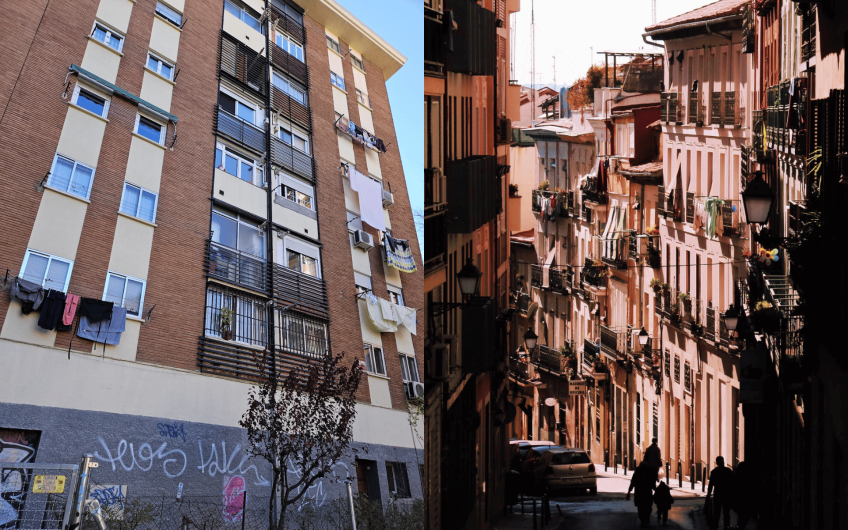
READ MORE: Segragation in Madrid
The vibrant city of Madrid, rich with cultural tapestry and historical significance, is now fighting an increasingly pressing issue that threatens the social fabric of its diverse neighbourhoods: socio-economic segregation. The disparities are most evident in housing patterns, where certain neighbourhoods have become enclaves of affluence, while others struggle with economic challenges. As Madrid continues evolving as a global city, attracting national and international residents, the stark divide between the rich and the poor has become a central concern for policymakers, urban planners, and the city’s inhabitants.
In light of this issue, we spoke to Leah Pattem, an independent British/Indian journalist in Madrid, who covers current affairs and underreported community stories from Spain. She has been living in a neighbourhood of Madrid called Lavapiés for ten years now. During this time she has become actively involved in her community, trying to address its various problems and be a part of the solution despite receiving xenophobia from locals and being told not to meddle in the local issues. She has launched an online media platform named Madrid No Frills where she confronts the socio-political issues that are happening in Madrid while also working on covering the same topics in her journalistic works.
One of the drivers of socio-economic segregation in Madrid is the high cost of living, particularly in the city centre. As luxury apartments and upscale businesses flourish in areas like Salamanca and Chamberí, lower-income residents find themselves pushed to the outskirts, where housing is more affordable but amenities and opportunities are scarce. This spatial division intensifies the social divide, creating a clear sense of inequality. In Lavapiés, a number of residents who were on a short-term contract became evicted by their landlords, notices Leah. She says that she is likely to be affected in the same way a couple of years from now. The deregulation of the property industry has resulted in Lavapiés being targeted very specifically because of its central location, so the number of tourists and students interested in living there has been increasing, which obviously favours the landlords, given the current economic climate and legal status around housing.
“I am not part of the problem – I am part of the solution.”
– Leah Pattem
In response to the challenge of segregation, a wave of grassroots movements and community initiatives has emerged in Madrid. Madrid’s citizens are mobilising through community action, helping to address the local needs of the citizens, but also fostering dialogue between residents and policymakers to ensure that the voices of those most affected by urban segregation are heard. Leah mentions that Lavapiés is full of various movements focused on bringing the neighbours together to deal with the problems they all are suffering from. The feminist movements are dealing with segregation because so many women are experiencing evictions. Senegalese and Bangladeshi groups are raising awareness of housing, and educating people about their rights.
Some groups, like the Union of Tenants of Madrid (Sindicato de Inquilinas e Inquilinos de Madrid), the neighbourhood association Vecinas y Vecinos de Arganzuela, or the grassroots movement Asamblea 15M, advocate for policies that prioritise affordable housing, improved public infrastructure, and increased investment in education and healthcare in underprivileged areas. An effective way to achieve the goal of reducing segregation is the collaboration between the grassroots movements and the local political parties which can bring up the concerns and ideas directly to the Council.
The city government of Madrid has acknowledged the pressing issue of socio-economic segregation and has undertaken various measures to address the growing urban dilemma. The “Plan Madrid Recupera” is one example of such, focusing on revitalising neglected areas by improving parks, public squares, and transportation networks. These efforts aim to create more livable environments and reduce the physical barriers that contribute to socio-economic segregation. Despite these initiatives, challenges persist.
In order to effectively resolve the issue of segregation there needs to be a lot more unity and trust between the political platforms and neighbourhood associations, suggests Leah. But it is fundamental for the citizens to get involved and understand what is going on in their city to be able to do something about it. The entire city needs to be communicating with each other. She emphasises that the foreigners who come to live in Madrid should not be seen as a problem but as a solution instead. They all can get involved in neighbourhood movements and work on resolving common issues.
Segregation in European Capitals: What to do about it?
This article may have shed only a spot of light on such a complicated and ever-expanding issue of urban segregation in Europe. European capitals are attracting more and more people every day, and the problems have been worsening for many years already. The examples of the cities in this text show that various types of segregation are intertwined in the urban layout: with spatial segregation comes socio-economic, cultural and educational.
In the mentioned capitals, municipal policies, housing markets and systems lay the groundwork for the rise of urban segregation, but are not the only contributors to the problem. It is also the people who choose how to interact with their co-citizens: from deciding on the school class composition to abstaining from interactions with other social groups and classes. The municipal authorities need to work out effective strategies to dissolve the existing disparities between citizens, but citizens themselves can also be the force to change the urban layout and make it more integrated. Maybe, the last line of the song Banlieusards by the French rapper Kery James - “apprendre, comprendre, entreprendre (learning, understanding, interacting)” - could be a key to solving this urban dilemma.
This article is part of the project "Newsroom Europe" which trains young Europeans from three EU Member States (Germany, Sweden and Spain) in critical and open-minded media reporting and on the functioning of European decision-making. The project is carried out jointly by the Europäische Akademie Berlin e.V., the National Museums of World Culture Sweden, and the Friedrich Naumann Foundation Spain, and is also co-financed by the European Union.

Project partners “Newsroom Europe”
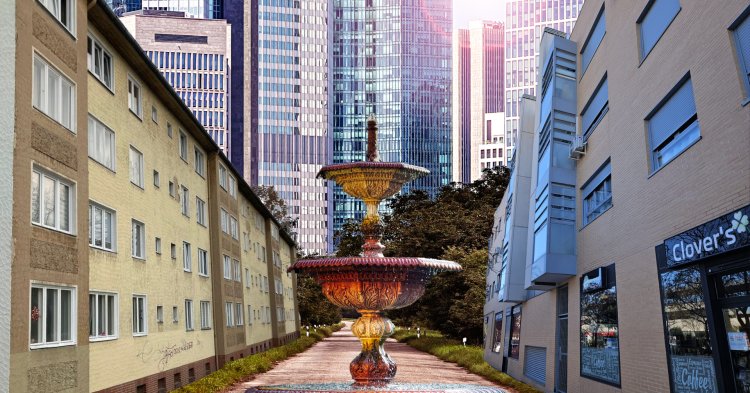
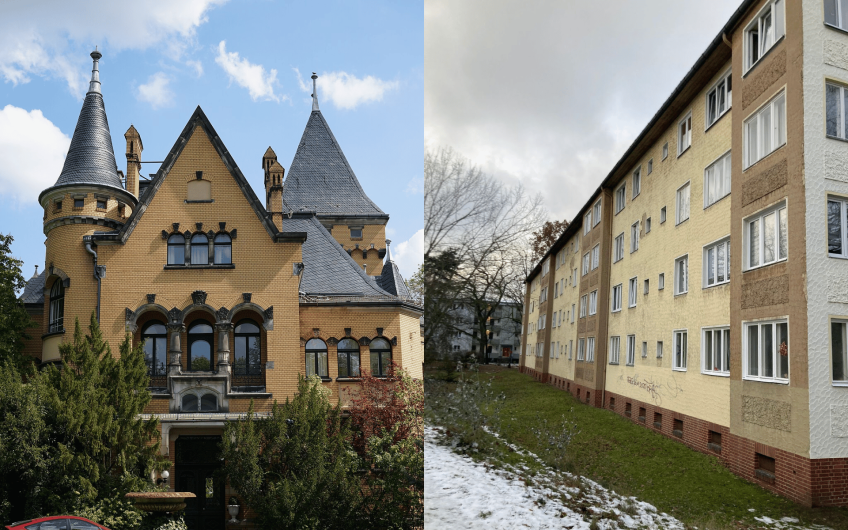
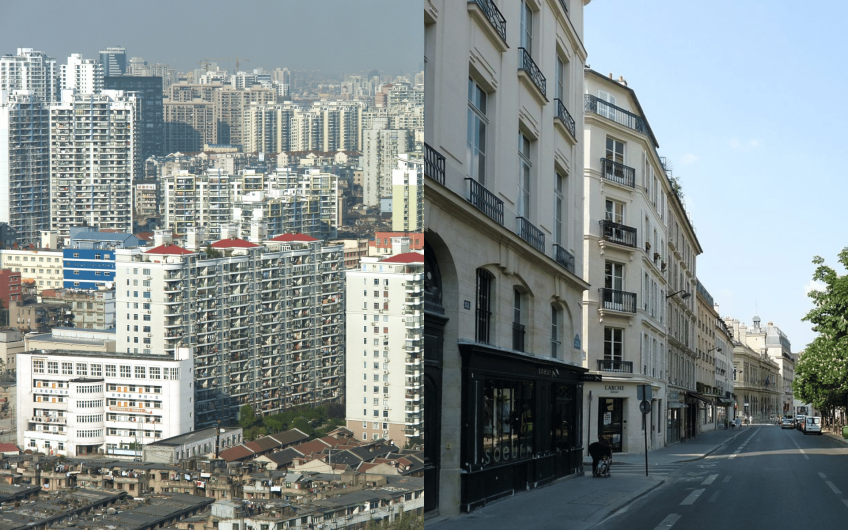



Follow the comments: |
|
